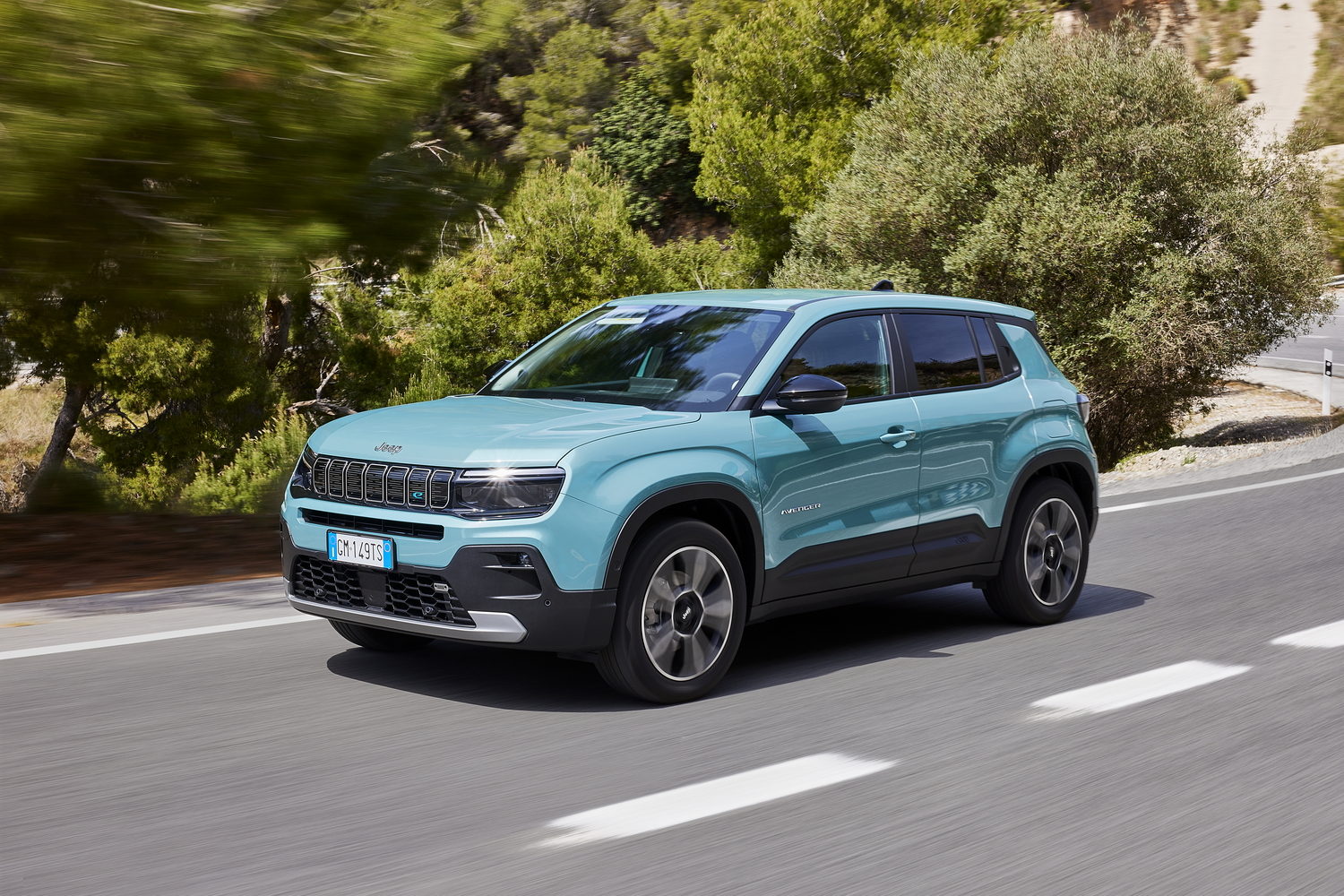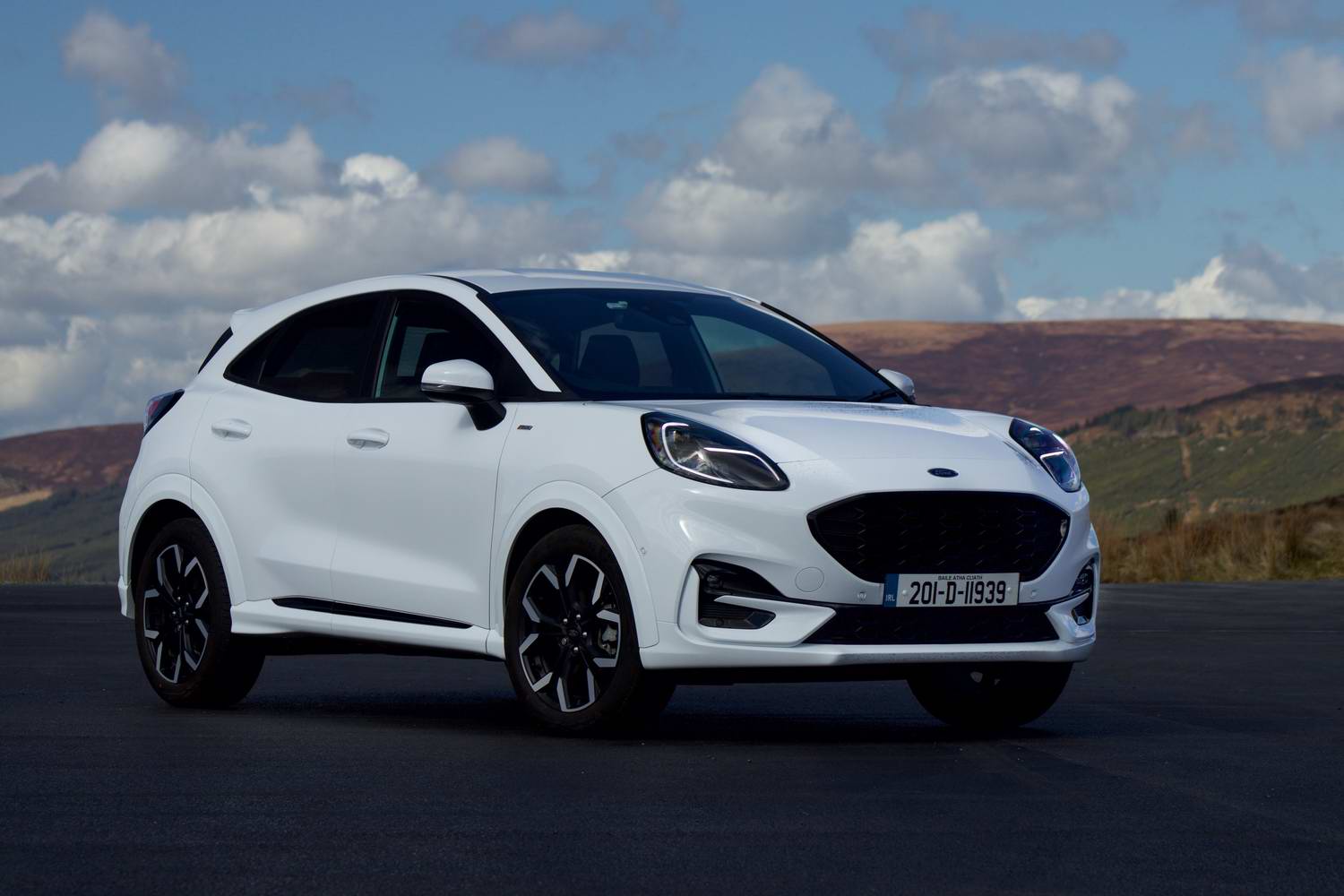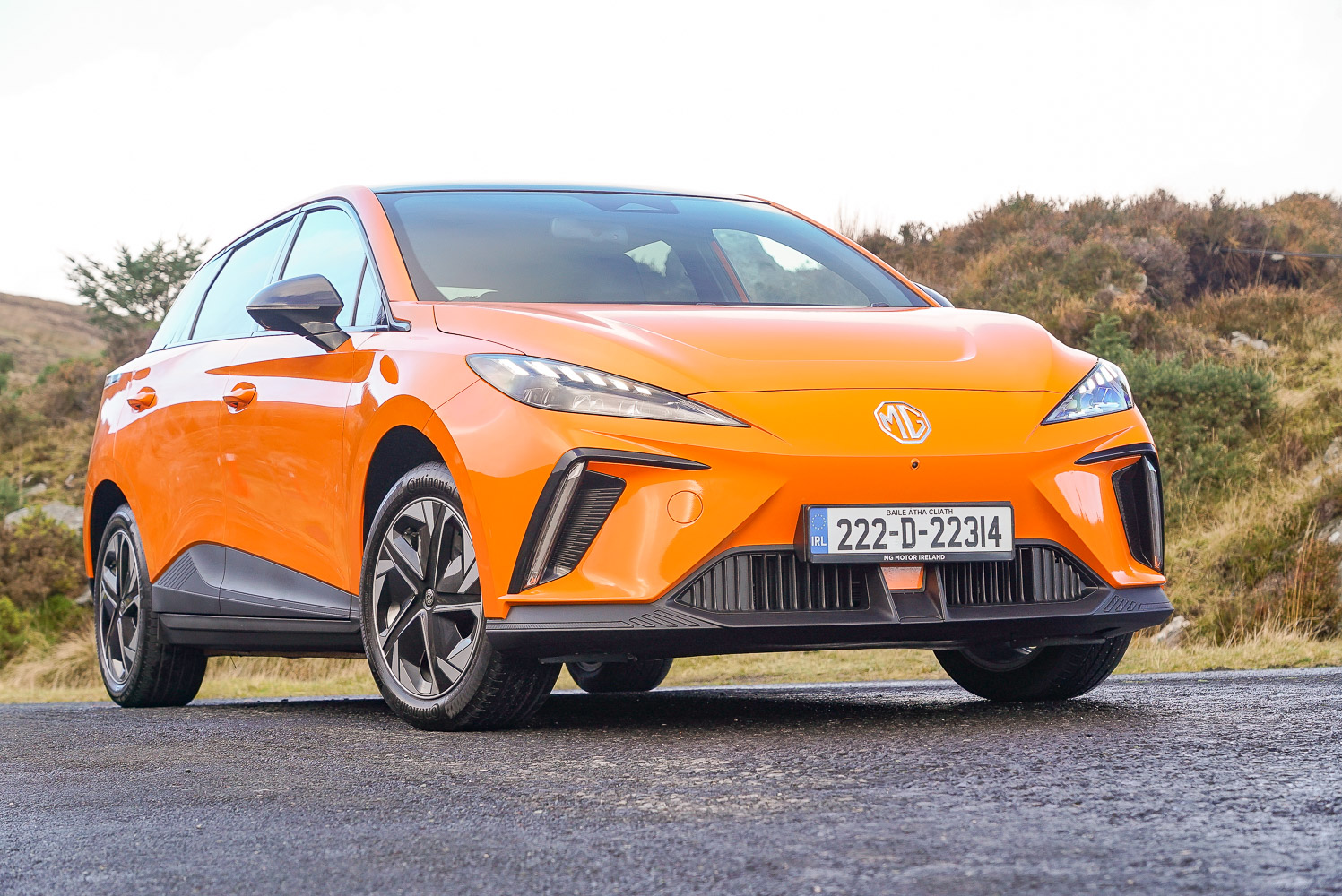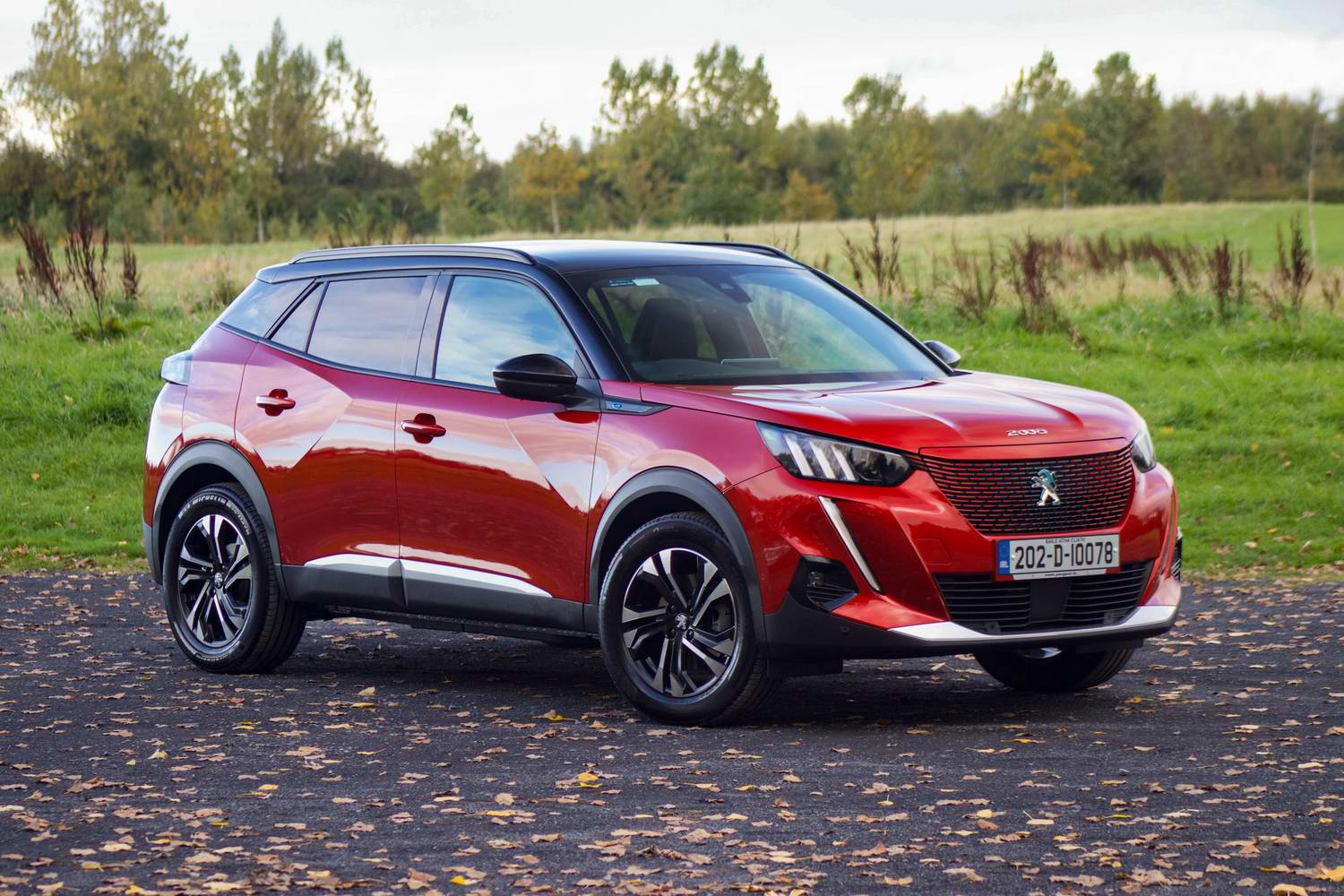The Jeep Avenger certainly looks the part, and on this initial test drive it showed good electric performance, too. Will Irish buyers finally take to the brand en masse?
In the metal
If the new Jeep Avenger is going to succeed in the Irish market - and tens of thousands of European orders for the car, well ahead of anyone having test driven it suggest that it just might - then it will succeed primarily on its looks.
Not looks alone, but certainly the Avenger's handsome styling is a major attraction. It manages to mix classic 1941 Willys Jeep styling cues - the seven-slot grille, the chunky wheelarches, the tumblehome of the bonnet and shoulders - with resolutely modern detailing. There are clever stylistic touches too, such as headlamps deeply recessed into the bodywork so that there's less chance of them being damaged in a parking ding, and ditto for the fog lights and rear reflectors. There's real underbody protection too - the 'bash plate', which on most cars is a flimsy piece of painted plastic, is on the Avenger a more substantial, functional panel with its colour included at the moulding stage so that it's all-but impossible to scratch.
Most models are available with a contrast black roof, and with its four-square styling, the Avenger is undeniably hugely appealing.
Inside, there's a lot of good stuff going on, but equally some miss-steps. The full-width contrast-coloured panel that spans the entire dash looks smart, but it also causes unhelpful reflections in the door mirrors. We love the Land Rover Defender-style open storage shelf on the dash, but love much less the plastics on the doors and on the lower edges of the fascia.
The big 10.25-inch touchscreen set high up in the centre is standard across the entire range, and works well, as do the proper, physical controls for heating and ventilation, a feature of which Jeep's designers are rightly proud. The main instrument display - 10.25 inches too, at least in our highly-specced test car - is clear and usefully adaptable.
There's a substantial storage area on the centre console - covered by an iPad-style fold-back magnetic cover - which is also home to the wireless phone charger and a pair of USB sockets. There are two large, adjustable cupholders and another storage area under the front armrest, but the door bins are on the small side.
Set the front seat up for a six-foot-tall driver and the passengers in the back will have to splay their knees to fit in. Headroom is fine, but the Avenger's high windowsill and small glass area leave the rear feeling somewhat claustrophobic. At least rear-seat passengers get a USB socket, albeit just the one.
The boot, at 380 litres, is a decent size and is a full metre across, with a load lip just 720mm off the ground. The Avenger isn't the roomiest compact crossover in luggage space terms, but it's fine.
Driving it
Based on the same 'e-CMP2' platform that underpins the likes of the Opel Mokka-e and Peugeot e-2008, this is our first chance to try out the latest 54kWh (gross) battery pack and the 156hp electric motor.
The good news is that range certainly seems to be increased on this setup's predecessor, and is potentially much more useable in day-to-day driving. Most of our test route was on hilly country roads, mixed in with some urban driving and a minimum of motorway mileage. That makes it impossible for us to definitively say how far the Avenger will go on one charge, but it certainly seems to be an improvement on the outgoing e-2008 and Mokka-e.
Those cars would have struggled to get much further than 280km on a full battery charge in mixed conditions, but the Avenger was telling us that, at 80 per cent battery charge, it still had 302km left to run. That's hopeful, even if it's a result affected by the clement Spanish conditions of our test drive. At least there is now a standard heat pump system to reduce the strain on the battery in chillier Irish weather.
Overall performance is good. Selecting Eco or Normal driving modes restricts the electric motor's power to as little as 81hp, but even then, it pulls along quite nicely, and you don't have to select Sport mode to get access to all 156hp - just press your foot to the floor and in 'kickdown' mode, all the power and torque is available to you.
Acceleration is brisk rather than rapid, but the Avenger never feels slow nor sluggish.
In handling terms, it has nicely-balanced steering, good grip levels and a sense of being both firmly planted yet adjustably agile. It's no driver's car, but for most people it should feel eager and engaging enough. The low-speed ride can be quite lumpy at times, but it smooths out at speed (and our test car was on the largest 18-inch alloys, so a version with smaller wheels may well ride better than this around town).
The regenerative braking is usefully strong if you've selected the B mode for the transmission, which is just as well as the brake pedal feel isn't the best.
Visibility out is a bit of an issue, too - the roof is low and the pillars are chunky, though the rear-view camera partially compensates.
Refinement is fine, with relatively well-contained wind and tyre noise.
Jeep makes great play of the Avenger's genuine ruggedness, in spite of this version being front-wheel drive only. As standard, you get the Selec-Terrain function, which sets the car up for mud, snow, ice or sand driving modes and all Avengers come with 200mm of ground clearance (and a little more space directly under the battery pack). Jeep's engineers even shortened the front and rear crush structures so that the Avenger can cope with a 20-degree slope in front, and a 32-degree slope behind, and the engineers say that such figures are at least as much use around town - combined with the 10.5-metre turning circle - as they are in the forests and deserts of this world.
There's also standard hill-descent control, and while we were only allowed to test the Avenger's capability on a mildly rough gravel track, it did in fairness take to the terrain like the proverbial Anatidae to aqua. The only shortcoming is that on very rough surfaces, taken at speed, the suspension seems to run out of travel too quickly. Possibly smaller wheels would help here too.
What you get for your money
Prices for the Avenger have yet to be set by Gowan Auto, Jeep's Irish importer, but we'd suspect that they'll broadly fall into the €38-€41,000 ballpark. It looks as if Ireland will do without the most basic 'Avenger' trim level, so we'll get Longitude, Altitude and Summit versions. That means a 10.25-inch touchscreen, seven-inch digital instrument panel, air conditioning, heated door mirrors, electric parking brake with auto hold, keyless go, cruise control, lane keep assistance and LED headlights all as standard. In due course, a full four-wheel-drive model with two motors and extra ground clearance, badged as 4XE, will be available.
Summary
Clearly, price is going to be important to the Avenger's likely success in the Irish market, and we don't have a firm grasp of that just yet. Equally, the size of the dealer network - long overdue for expansion - will play a crucial role in bringing the Jeep brand as a whole to a wider Irish audience. Space in the back and some cabin materials count against it, but this could be - and possibly deserves to be - Jeep's long awaited Irish breakout model. It looks great, drives nicely and seems to have decent electric range and performance. For its first all-electric car, the Avenger is a solidly impressive effort from Jeep.























